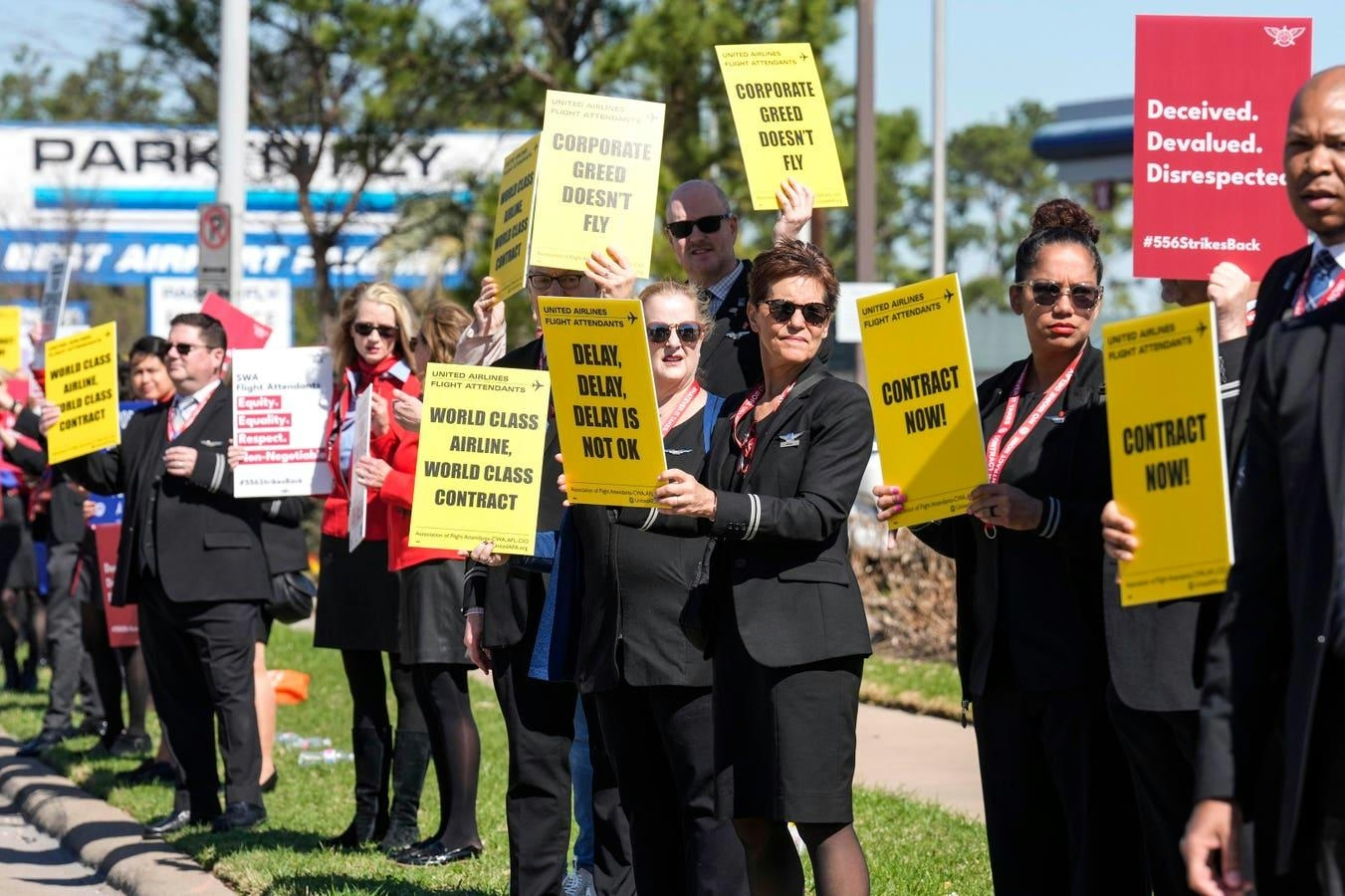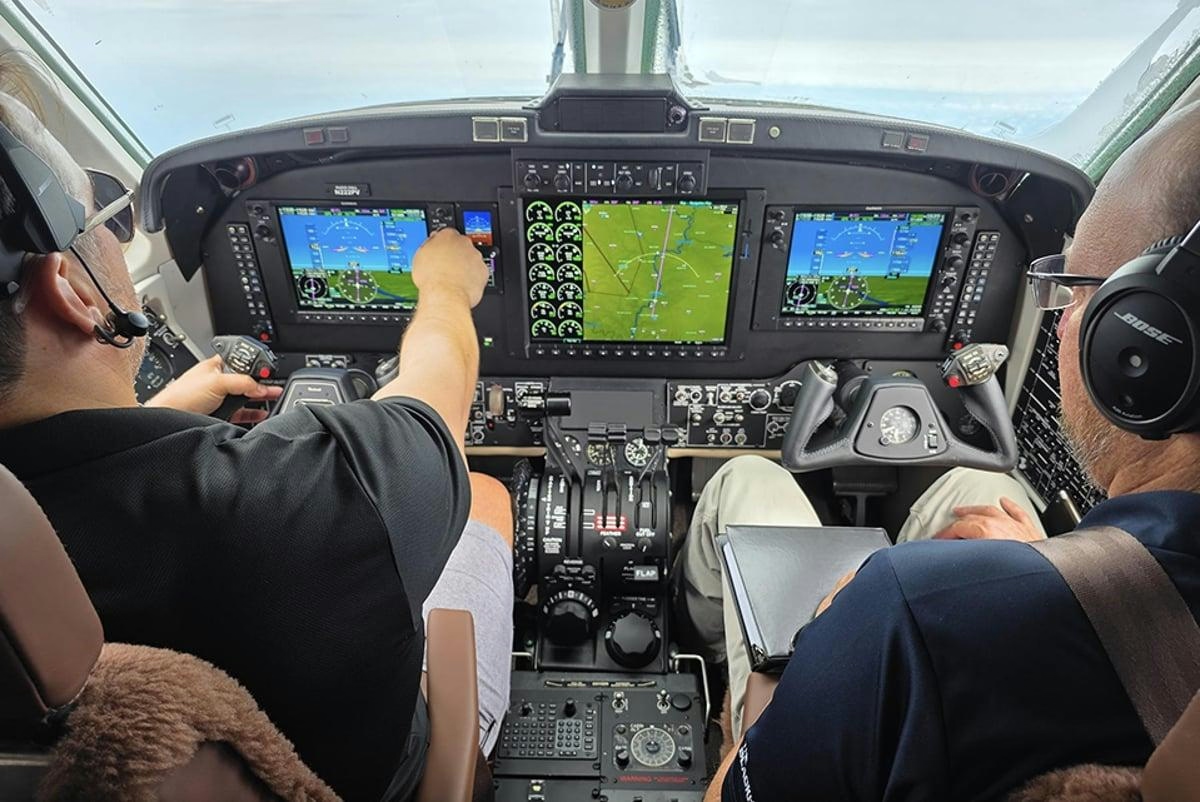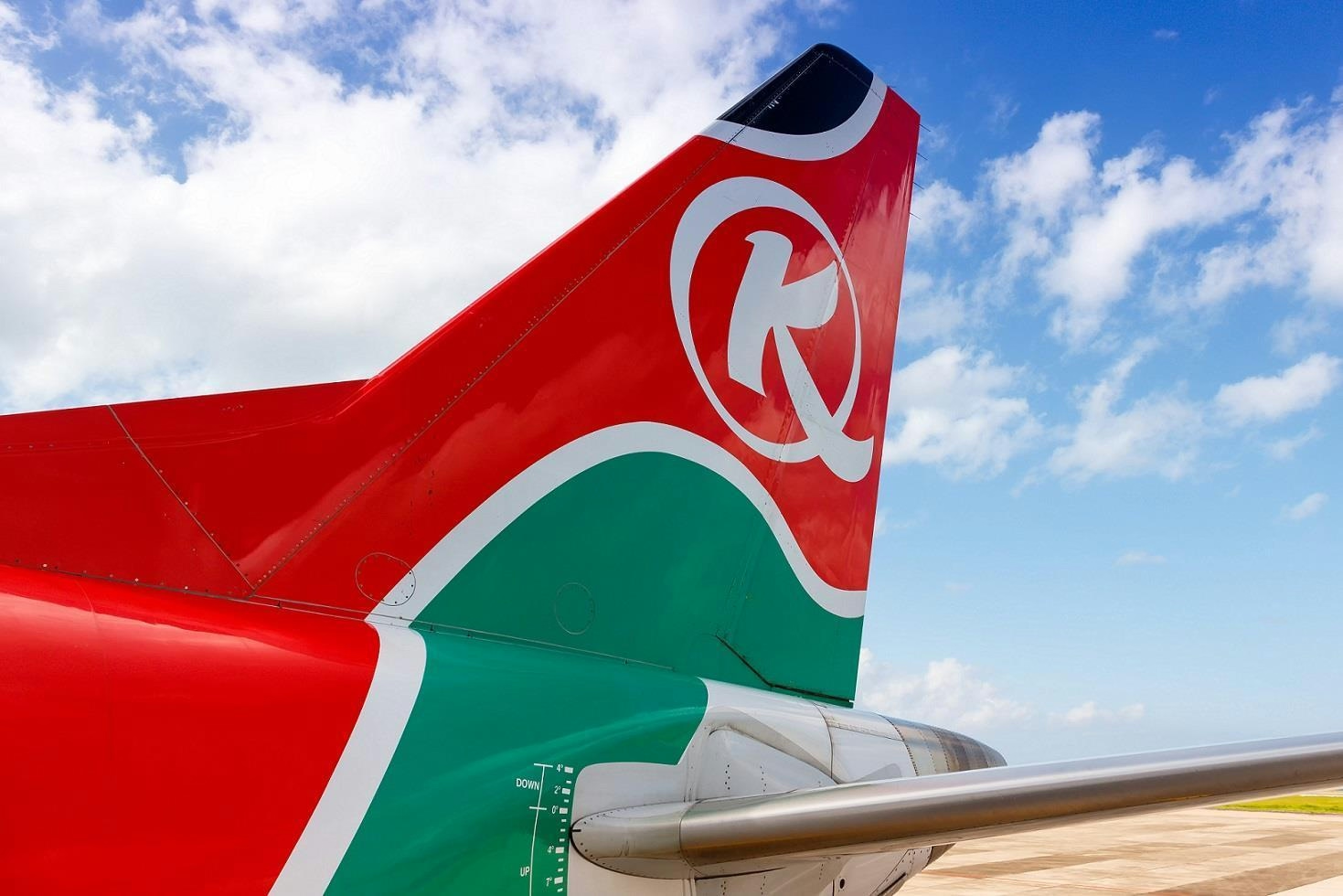
AeroGenie - مساعد الطيار الذكي الخاص بك.
الرائج الآن
Categories
United Flight Attendants Vote Amid AI Concerns and Misinformation

United Flight Attendants Vote Amid AI Concerns and Misinformation
United Airlines flight attendants began voting on Monday regarding a tentative contract agreement that promises a significant 27% average salary increase, enhanced grievance procedures, and the introduction of boarding pay for the first time. Despite these improvements, the contract has been the subject of widespread misinformation circulating on social media and various internet platforms, casting doubt on its benefits.
Misinformation and the Role of AI
Sara Nelson, president of the Association of Flight Attendants (AFA), which represents approximately 50,000 flight attendants including 29,000 at United, expressed deep concern over the impact of artificial intelligence and online misinformation on the ratification process. Nelson highlighted that many blogs and AI-generated content have inaccurately portrayed the contract, often without verifying facts with the union. She noted that some posts falsely criticized hotel policies, misrepresented union negotiation strategies, and even suggested airline surveillance of flight attendant communications—claims that the union categorically denies.
Nelson emphasized the limitations of AI tools like ChatGPT, explaining that these systems tend to aggregate negative comments without the human judgment necessary to understand the nuances of complex labor agreements. “A.I. spits out whatever you want,” she said. “You ask a question, ‘What’s wrong with the United contract?’ and it will look for all of the bad comments anyone has made. It has no ability to have a human filter of the nuances.” This proliferation of inaccurate information has complicated the ability of flight attendants to make informed decisions as the voting deadline of July 29 approaches.
Union Response and Clarifications
Ken Diaz, president of the United AFA chapter, has been actively engaging with flight attendants across seven United hubs and through virtual meetings, some attended by as many as 5,000 members. Diaz acknowledged the prevalence of misinformation but stressed that direct communication helps clarify misunderstandings. “There is so much misinformation from bloggers, but once we have the conversation and clarify, people understand it is not factual,” he said. Diaz also refuted claims that the union made significant concessions, affirming that no work rules were surrendered and that the contract includes numerous improvements.
An example of the misinformation campaign involved the blog “Live and Let’s Fly,” which on June 10 published an article titled “6 Clauses That Could Derail United’s New Flight Attendant Contract.” The piece listed five purportedly unfavorable contract changes. After the AFA contacted the blog, it appended red-inked notes on June 12, marking each claim as “false” or “entirely false.” The blog maintained that its original information came from a “reliable inside source” and questioned the motives behind the union’s rebuttal, suggesting sabotage as a possible explanation.
Changing Landscape of Industry Reporting
Nelson observed that traditional news outlets, which typically maintain rigorous standards and tend to report only on significant developments during contract votes, have been largely supplanted by bloggers and social media influencers with different editorial practices. This shift has contributed to the spread of unverified and misleading information during critical moments in labor negotiations.
As United flight attendants continue to weigh the tentative agreement, the union remains focused on combating misinformation and ensuring that members have access to accurate, transparent information before casting their votes.

Starlink Expands High-Speed Wi-Fi Service to Private Jets

M1 Support Services Secures $601 Million MRO Contract with U.S. Army

Teneo.ai Launches Agentic AI for Airlines, Automating Luggage Updates and Loyalty Support with Enterprise-Grade Control

Archer Partners with NVIDIA to Develop Next-Generation Aviation AI

Blackhawk Group Acquires Silver Sky Aviation

Nine Lufthansa Airlines to Adopt Amadeus’ AI-Based Nevio Modular Solutions

ACC Aviation Names Luca D’Urso Vice President

Travel in 2045: A 20-Year Outlook on AI’s Impact

BluJay Aerospace Advances Indian Aviation
